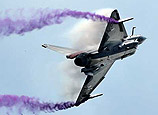
However, other drivers complained that the authority always seemed to raise prices more eagerly and substantially than it cut prices.
Liao Kaishun, an analyst at C1 Energy, said the NDRC had delayed the price cut for a day after international oil price changes reached 4 percent, and may introduce a more flexible oil pricing mechanism when the international oil price reached its bottom and if inflation remained cool by then.
"The NDRC is mulling over a change of the pricing mechanism," Liao said. "It may reduce the shortest price change interval from 22 days to 10 days, and halve minimal price changes from 4 to 2 percent to better follow international oil price trends."
Domestic gasoline prices may rise more frequently after the mechanism is introduced, he added.
The NDRC has rigidly followed the pricing formula in previous adjustments. The September increase followed a rise in August and three cuts between May and July amid tepid growth in oil demand as the overall economy slowed.
Commission officials have said on several occasions that they are working to improve the frequency of fuel adjustments as part of efforts to make the current pricing system more transparent and predictable.
Commodity analysts said a bearish look still dominates the oil market after the International Energy Agency re-emphasized over-supply in its outlook report released earlier this week.















 'Gangnam style' life of young rich in Chongqing
'Gangnam style' life of young rich in Chongqing


![]()
